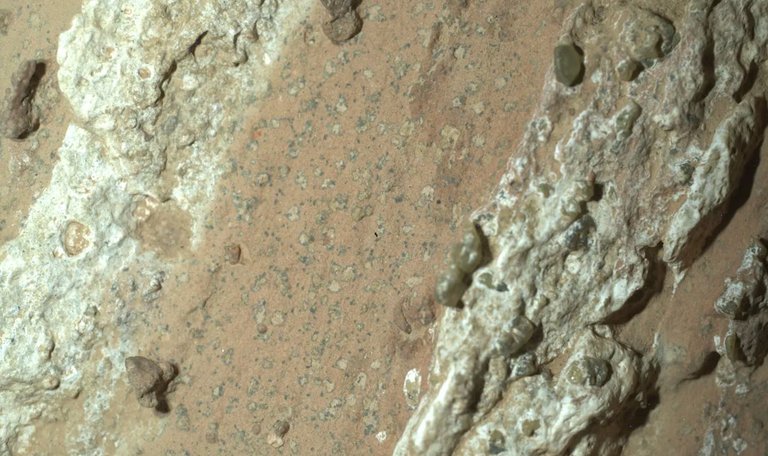Possible signs of life found on Mars

NASA’s Perseverance rover has found signs on Mars that could be signs of past life. Perseverance found these remains last year on a rock in the Jezero crater, where a large lake and river system existed billions of years ago. Now, in a paper published in Nature, it has been explained that they have detected minerals and chemical compounds that usually appear on Earth in relation to microbial activity.
During the investigation of the rock called Cheyava Falls, colored stains were found. Two iron-rich minerals have been found in these stains: vivianite and greigite. Vivianite is often found on Earth in sediments, peatlands, and around rotting organic matter. Greigite can also be produced by some microorganisms on Earth.
The researchers believe that these minerals could be produced by electron transfer reactions between sediment and organic matter, which could be a sign of life, since microorganisms would use these reactions to generate energy for growth. Conversely, these minerals can also be produced in vivo under certain circumstances, such as persistent elevated temperatures, acidic conditions, or the association of organic compounds. The researchers note, however, that these rocks in Jezero do not appear to have been exposed to high temperatures and acidic conditions, and it is not known whether the reactions of organic compounds could have occurred at low temperatures.
On the other hand, they emphasize that they are relatively young rocks and that, if they were really signs of life, this suggests that Mars might have been suitable to live longer than expected. In any case, researchers have made it clear that more studies are needed to confirm whether these stains are actually evidence of life.
Buletina
Bidali zure helbide elektronikoa eta jaso asteroko buletina zure sarrera-ontzian











